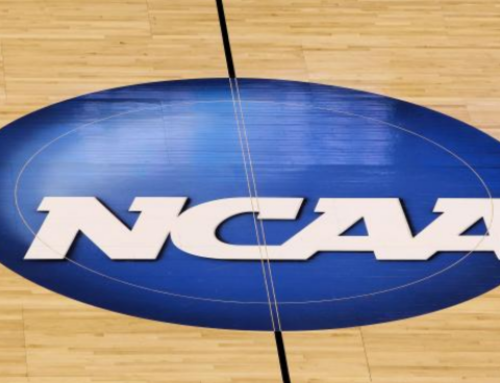The Benefits of a Visual Portfolio For Every Athlete
Building a brand in the age of complex social media platforms can be tricky for young and advanced athletes. Therefore, making and putting together the puzzle of navigating and promoting work on a platform viewed by diverse users encourage innovation through crowd culture.
In addition, crowd culture in a competitive social media environment for young athletes encourages creativity through repackaged athletic modalities that everyone can see. With the rise of new training modalities, athletes look for scholarships and friendly competition with friends, and their social media influence encourages the creation of short stories to express and engage varying audiences.
Through various clicks, intensive interactions push ideas based on mainstream athletic environments. Therefore, branding content and developing a visual portfolio allows one to share their craft, exchange ideas, fine-tune their content, and compete against other athletes in a visual world. In the competition process, new talent emerges, and their content is highly attuned to audiences for success.
To create success for today’s young athletes, a visual athletic portfolio showcases creative skills and abilities; images of high-quality and visually appealing fields of work. Undoubtedly the portfolio allows teams to see if they are interested and how you stand out from other athletes, what good impressions they have, and find new opportunities and connections.
Furthermore, with this robust visual portfolio, coaches and employers are interested in seeing examples of your work, which is valuable; consequently, your play must also speak for your portfolio representation.
What’s Included in an Athlete’s Visual Portfolios
A visual portfolio can include various types of content, such as school design projects, training videos, games, friendly photos, family, training, school, and team activities.
Many schools have yet to require a visual portfolio. However, they do look at one’s and their parent’s social media content. They often check for hate speech, explicit content, foul language, drug use, illegal activity, negative online presence, or badmouthing of their parent’s job or the athlete’s teams, coaches, and officials.
When creating a sports portfolio, the goal is to have twenty or more pictures covering action, news around your sport, the game, and athletic milestones. Furthermore, this portfolio should show only specific sports images and videos that are reactionary to daily circumstances.
Therefore, please ensure your visual portfolio is a collection of images showing a complete body of work, helping you stand out from your competition.
Here are a few key elements that every good visual portfolio should have:
- Outline the content you are trying to show;
- Tailor your content to the audience to whom it will benefit;
- It should be well-organized, easy to navigate, easy to find, and grouped systematically;
- Your visuals should be high quality, well-lit, and in focus;
- Skills, talents, and extracurricular activities of the athlete should be shared;
- Address what will be focused on;
- Your content should efficiently navigate the videos and photos;
- Update content daily to engage everyone with fresh content.
- Use the correct hashtags;
- Tag your current club and future schools.
To summarize this article, it is vital to have a visual portfolio to present effective content over a long time. By putting together a well-crafted visual portfolio, you can show potential athletic directors and other parties of interest a snippet of who you are as a person and athlete.
RECOMMENDED FOR YOU
MOST POPULAR
The Benefits of a Visual Portfolio For Every Athlete
Building a brand in the age of complex social media platforms can be tricky for young and advanced athletes. Therefore, making and putting together the puzzle of navigating and promoting work on a platform viewed by diverse users encourage innovation through crowd culture.
In addition, crowd culture in a competitive social media environment for young athletes encourages creativity through repackaged athletic modalities that everyone can see. With the rise of new training modalities, athletes look for scholarships and friendly competition with friends, and their social media influence encourages the creation of short stories to express and engage varying audiences.
Through various clicks, intensive interactions push ideas based on mainstream athletic environments. Therefore, branding content and developing a visual portfolio allows one to share their craft, exchange ideas, fine-tune their content, and compete against other athletes in a visual world. In the competition process, new talent emerges, and their content is highly attuned to audiences for success.
To create success for today’s young athletes, a visual athletic portfolio showcases creative skills and abilities; images of high-quality and visually appealing fields of work. Undoubtedly the portfolio allows teams to see if they are interested and how you stand out from other athletes, what good impressions they have, and find new opportunities and connections.
Furthermore, with this robust visual portfolio, coaches and employers are interested in seeing examples of your work, which is valuable; consequently, your play must also speak for your portfolio representation.
What’s Included in an Athlete’s Visual Portfolios
A visual portfolio can include various types of content, such as school design projects, training videos, games, friendly photos, family, training, school, and team activities.
Many schools have yet to require a visual portfolio. However, they do look at one’s and their parent’s social media content. They often check for hate speech, explicit content, foul language, drug use, illegal activity, negative online presence, or badmouthing of their parent’s job or the athlete’s teams, coaches, and officials.
When creating a sports portfolio, the goal is to have twenty or more pictures covering action, news around your sport, the game, and athletic milestones. Furthermore, this portfolio should show only specific sports images and videos that are reactionary to daily circumstances.
Therefore, please ensure your visual portfolio is a collection of images showing a complete body of work, helping you stand out from your competition.
Here are a few key elements that every good visual portfolio should have:
- Outline the content you are trying to show;
- Tailor your content to the audience to whom it will benefit;
- It should be well-organized, easy to navigate, easy to find, and grouped systematically;
- Your visuals should be high quality, well-lit, and in focus;
- Skills, talents, and extracurricular activities of the athlete should be shared;
- Address what will be focused on;
- Your content should efficiently navigate the videos and photos;
- Update content daily to engage everyone with fresh content.
- Use the correct hashtags;
- Tag your current club and future schools.
To summarize this article, it is vital to have a visual portfolio to present effective content over a long time. By putting together a well-crafted visual portfolio, you can show potential athletic directors and other parties of interest a snippet of who you are as a person and athlete.
RECOMMENDED FOR YOU
Create A Free Recruiting Profile Today!
CaptainU helps athletes & parents not only be proactive but also to manage and take control of their entire recruiting journey.










